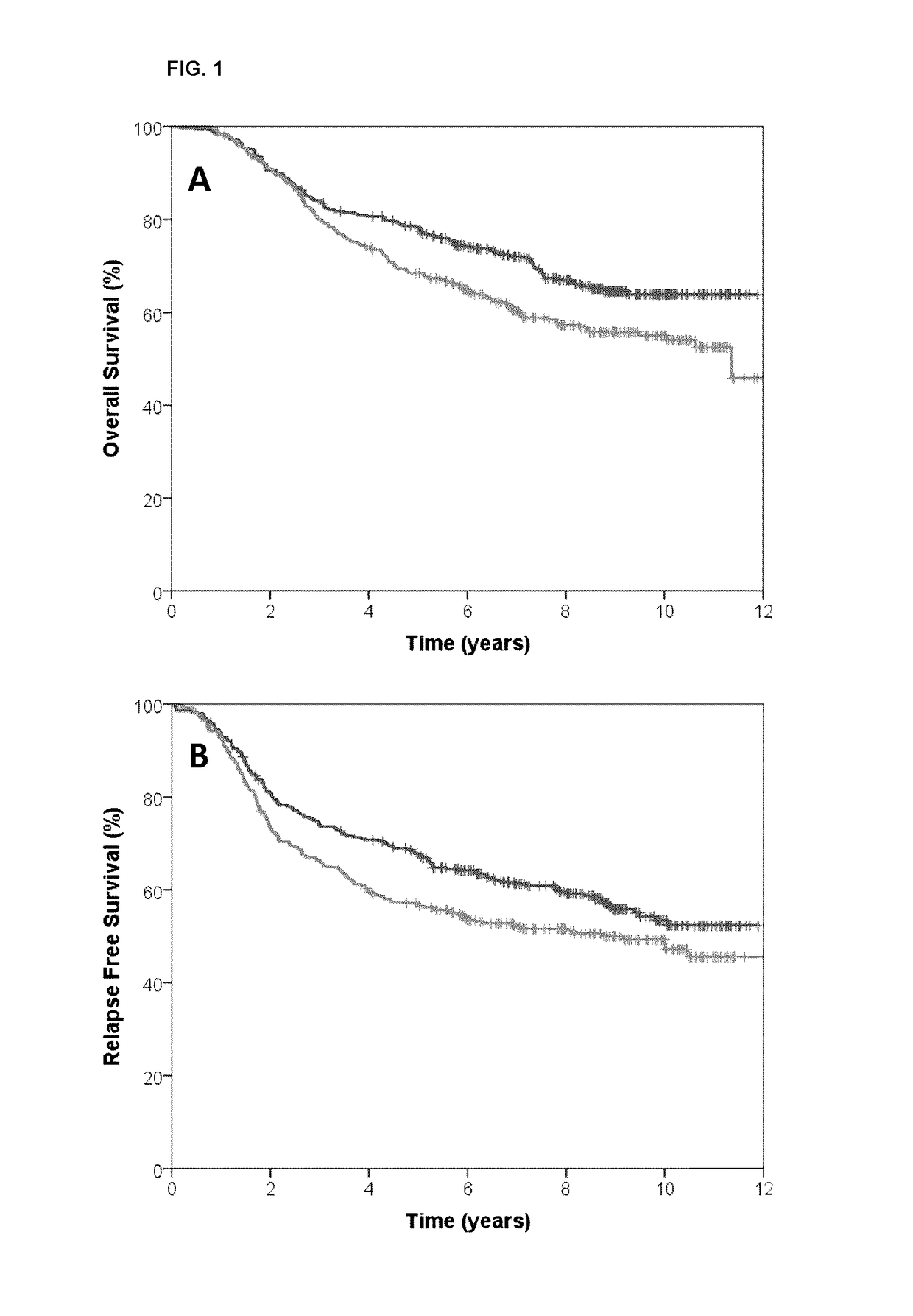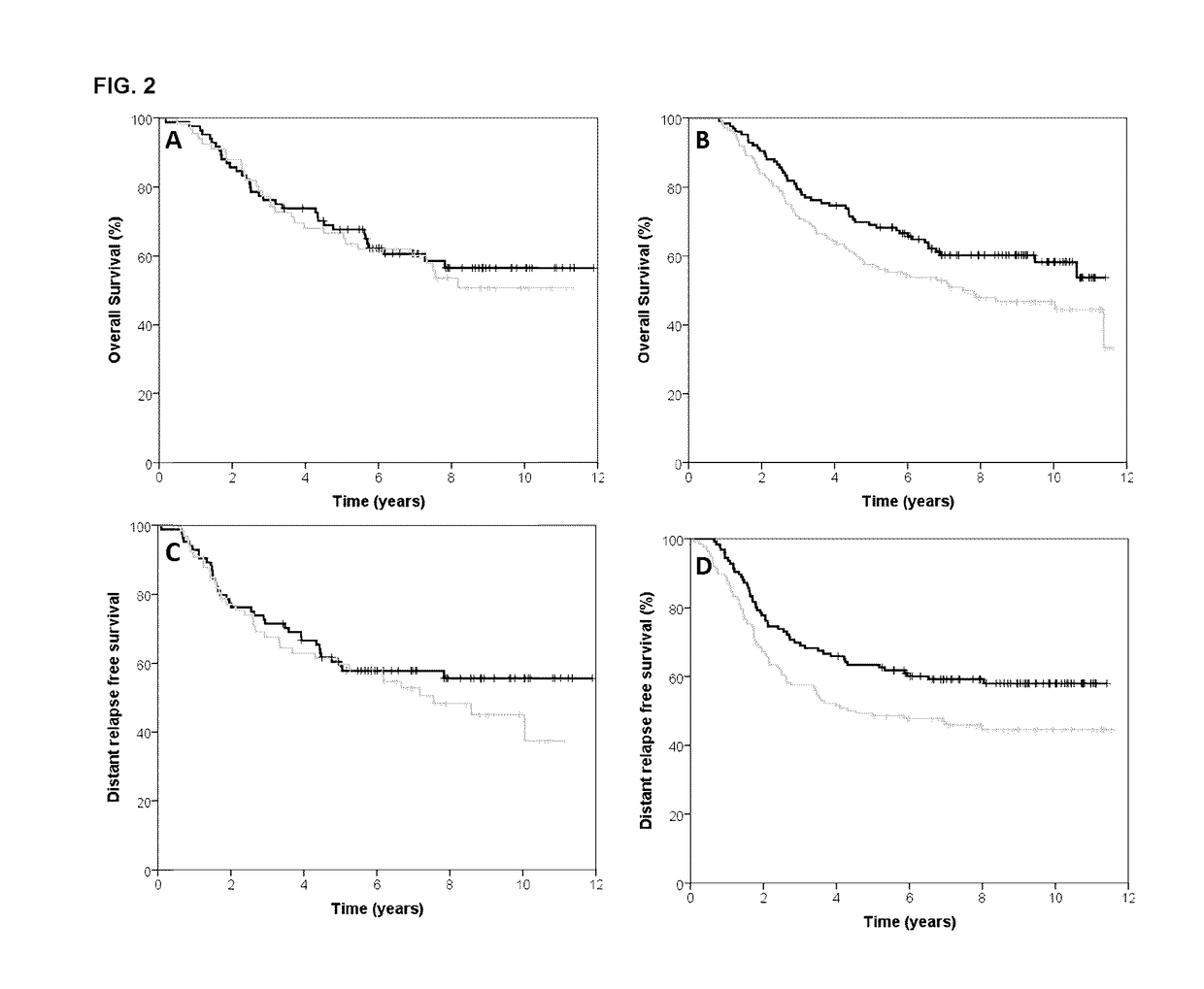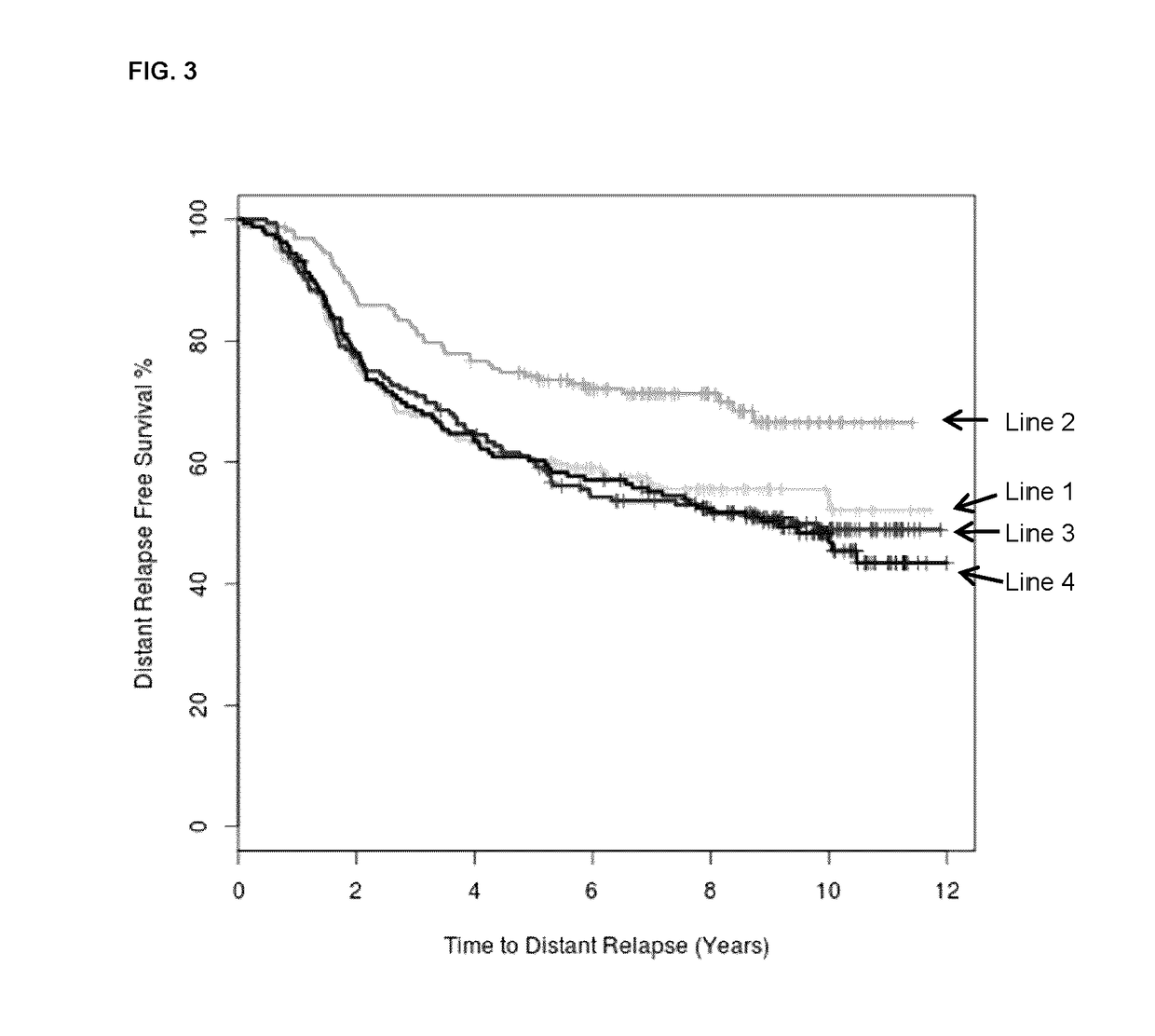Methods and devices for predicting anthracycline treatment efficacy
a technology of anthracycline and treatment efficacy, applied in the direction of cyclic peptide ingredients, biochemistry apparatus, biochemistry apparatus and processes, etc., can solve the problems of affecting the clinical outcome of breast, lung and brain tumors, affecting the clinical outcome of patients, and affecting the effect of cin scores
- Summary
- Abstract
- Description
- Claims
- Application Information
AI Technical Summary
Benefits of technology
Problems solved by technology
Method used
Image
Examples
example 1
inical Trial
[0094]The BR9601 trial recruited 374 pre- and post-menopausal women with completely excised, histologically confirmed breast cancer and a clear indication for adjuvant chemotherapy. Patients were randomized between 8 cycles of CMF (i.v. cyclophosphamide 750 mg / m2, methotrexate 50 mg / m2, and 5-fluorouracil 600 mg / m2) every 21 days, and E-CMF (4 cycles of epirubicin 100 mg / m2 every 21 days followed by 4 cycles of the same CMF regimen). Patient characteristics are shown in Table 3. The protocol was approved by central and local ethics committees, and each patient provided written informed consent prior to randomization. For the current analysis, tissue blocks were retrieved and RNA was extracted.
example 2
ical Trial
[0095]The MA.5 trial randomized 716 premenopausal women with node-positive breast cancer to receive either adjuvant CEF or CMF. The CEF regimen consisted of 6 cycles of epirubicin 60 mg / m2 and 5-fluorouracil (5-FU) 500 mg / m2, both delivered intravenously on days 1 and 8, and oral cyclophosphamide 75 mg / m2 daily on days 1 through 14. Patients randomized to the CEF regimen also received antibiotic prophylaxis throughout. The CMF regimen consisted of 6 cycles of methotrexate 40 mg / m2 and 5-FU 600 mg / m2, both delivered intravenously on days 1 and 8, and oral cyclophosphamide 100 mg / m2 daily on days 1 through 14. Patient characteristics are shown in Table 3. The MA.5 protocol was approved by the institutional review board at each participating center and registered as NCI-V90-0027 on cancer.gov. Written informed consent was obtained from each woman.
TABLE 3Baseline characteristics for patientsfrom BR9601 and MA.5 clinical trialsClinical trialCIN analysisBR9601MA.5BR9601MA.5Numbe...
example 3
ication and Gene Expression Analysis
[0096]Total RNA from formalin-fixed paraffin embedded (FFPE) tissue samples (2×10 μM sections) were extracted using the RecoverAll Total Nucleic Acid Isolation kit (Life Technologies) according to the manufacturers protocol and concentrations were determined using the NanoDrop ND-1000 spectrophotometer (NanoDrop Technologies).
[0097]RNA (400 ng) was used for the analysis with the nCounter system, according to the manufacturer's protocol (Nanostring® Technologies, Seattle, Wash., USA). In brief, 5 μl of RNA was hybridized at 96° C. overnight with the Nanostring Codeset.
[0098]Probes for the analysis of 70 genes and controls were synthesized by Nanostring technologies, including probes for the 70 genes of interest and 6 normalising genes. All 76 genes and controls were assayed simultaneously in multiplexed reactions (gene list, Table 4). After probe hybridizations and Nanostring nCounter digital reading, counts for each RNA species were extracted and ...
PUM
| Property | Measurement | Unit |
|---|---|---|
| length | aaaaa | aaaaa |
| resistance | aaaaa | aaaaa |
| paclitaxel resistance | aaaaa | aaaaa |
Abstract
Description
Claims
Application Information
 Login to View More
Login to View More - R&D Engineer
- R&D Manager
- IP Professional
- Industry Leading Data Capabilities
- Powerful AI technology
- Patent DNA Extraction
Browse by: Latest US Patents, China's latest patents, Technical Efficacy Thesaurus, Application Domain, Technology Topic, Popular Technical Reports.
© 2024 PatSnap. All rights reserved.Legal|Privacy policy|Modern Slavery Act Transparency Statement|Sitemap|About US| Contact US: help@patsnap.com










